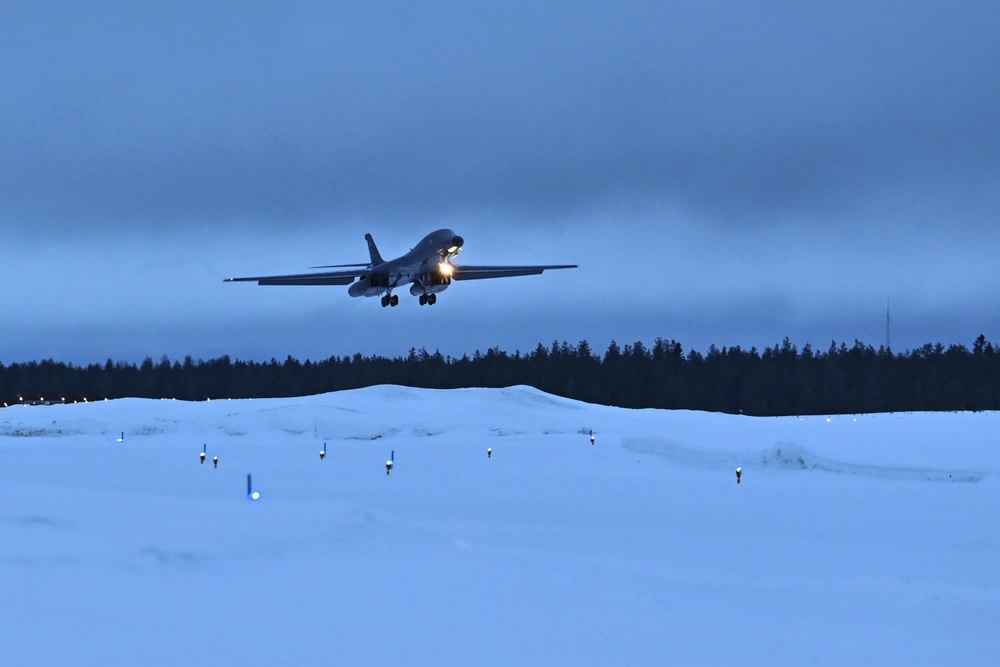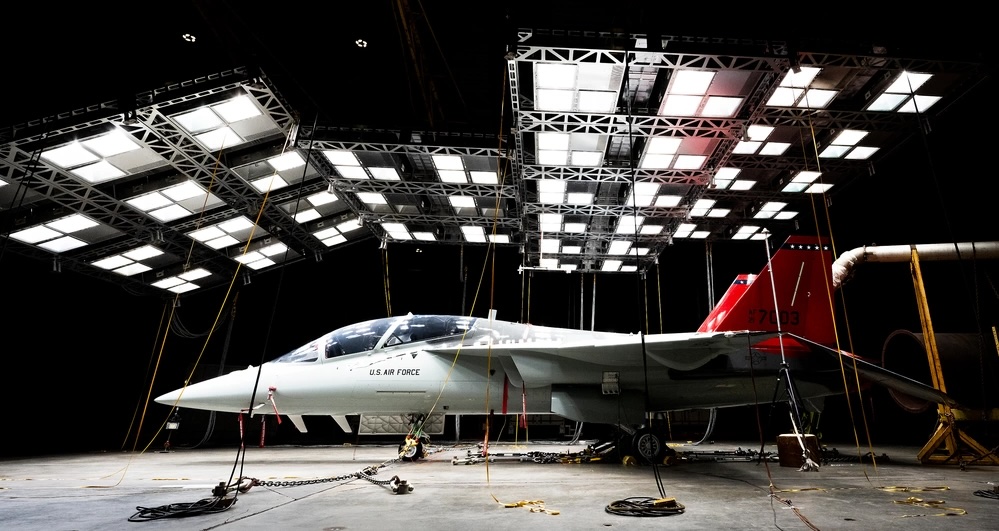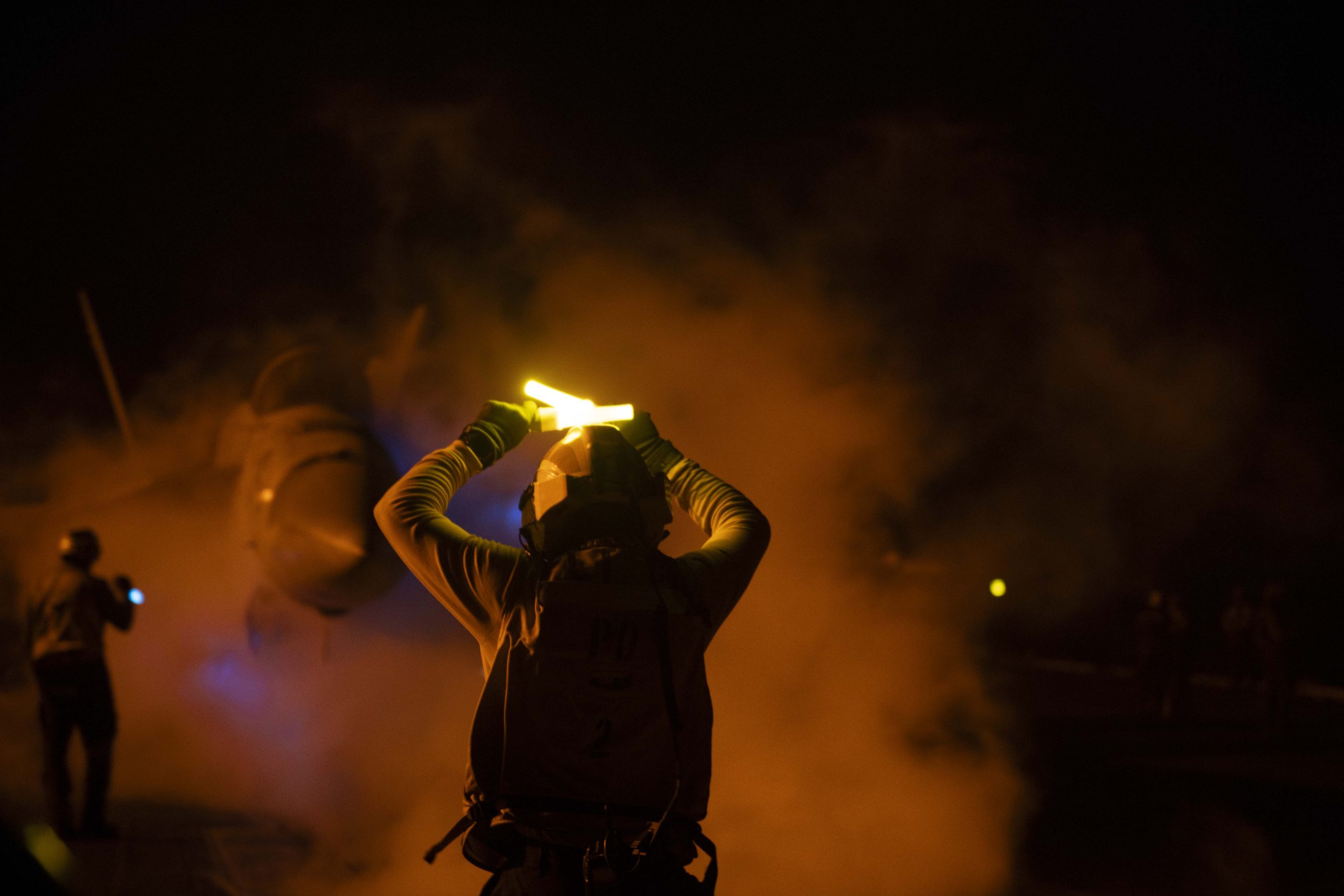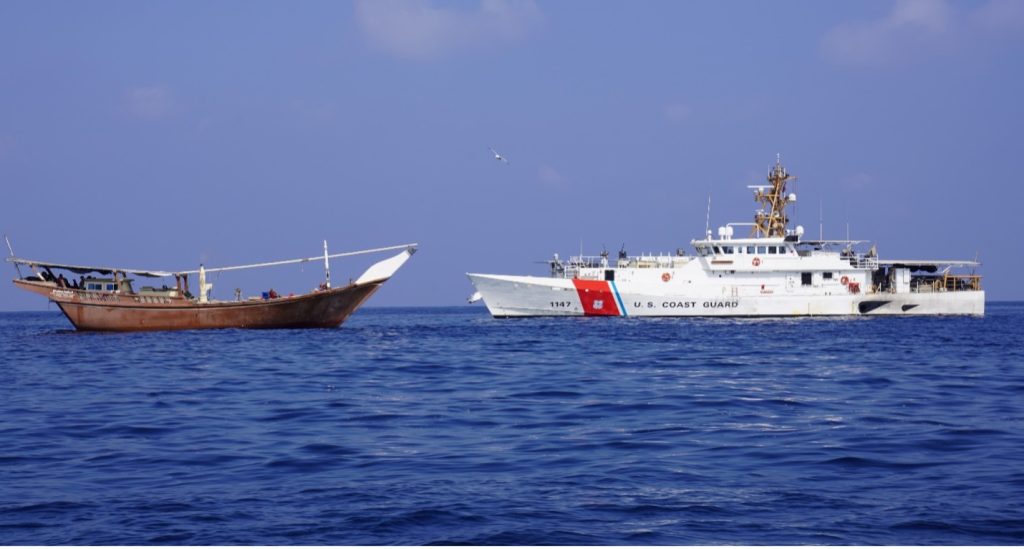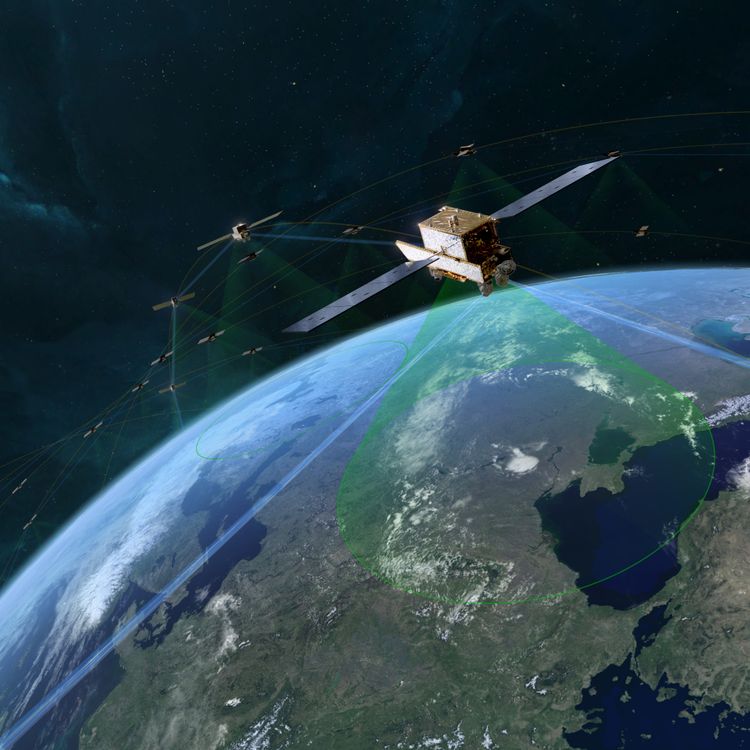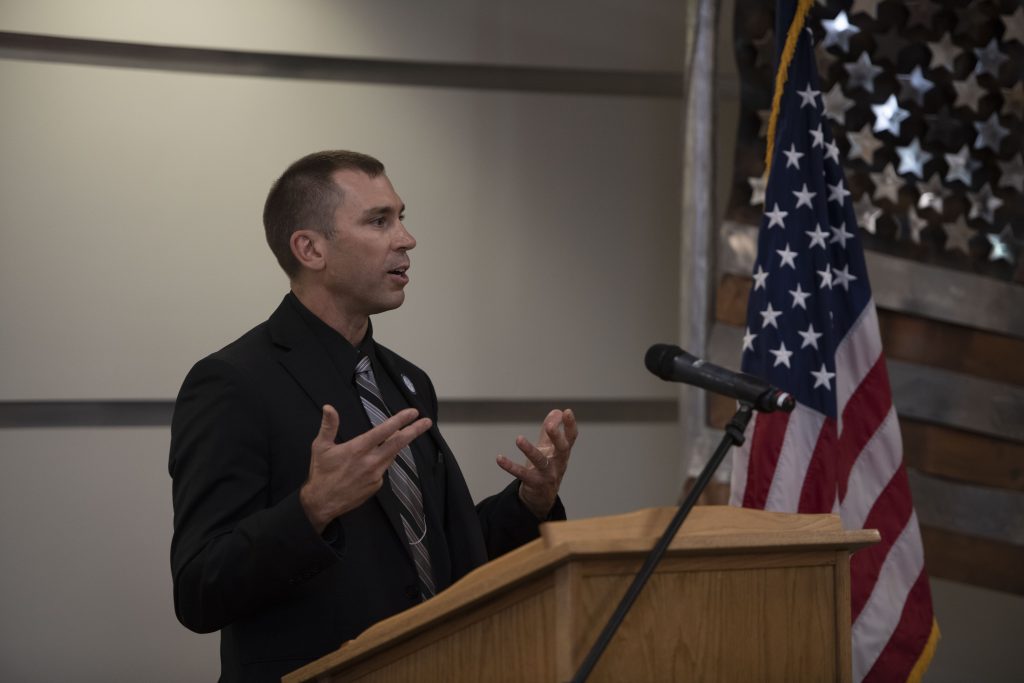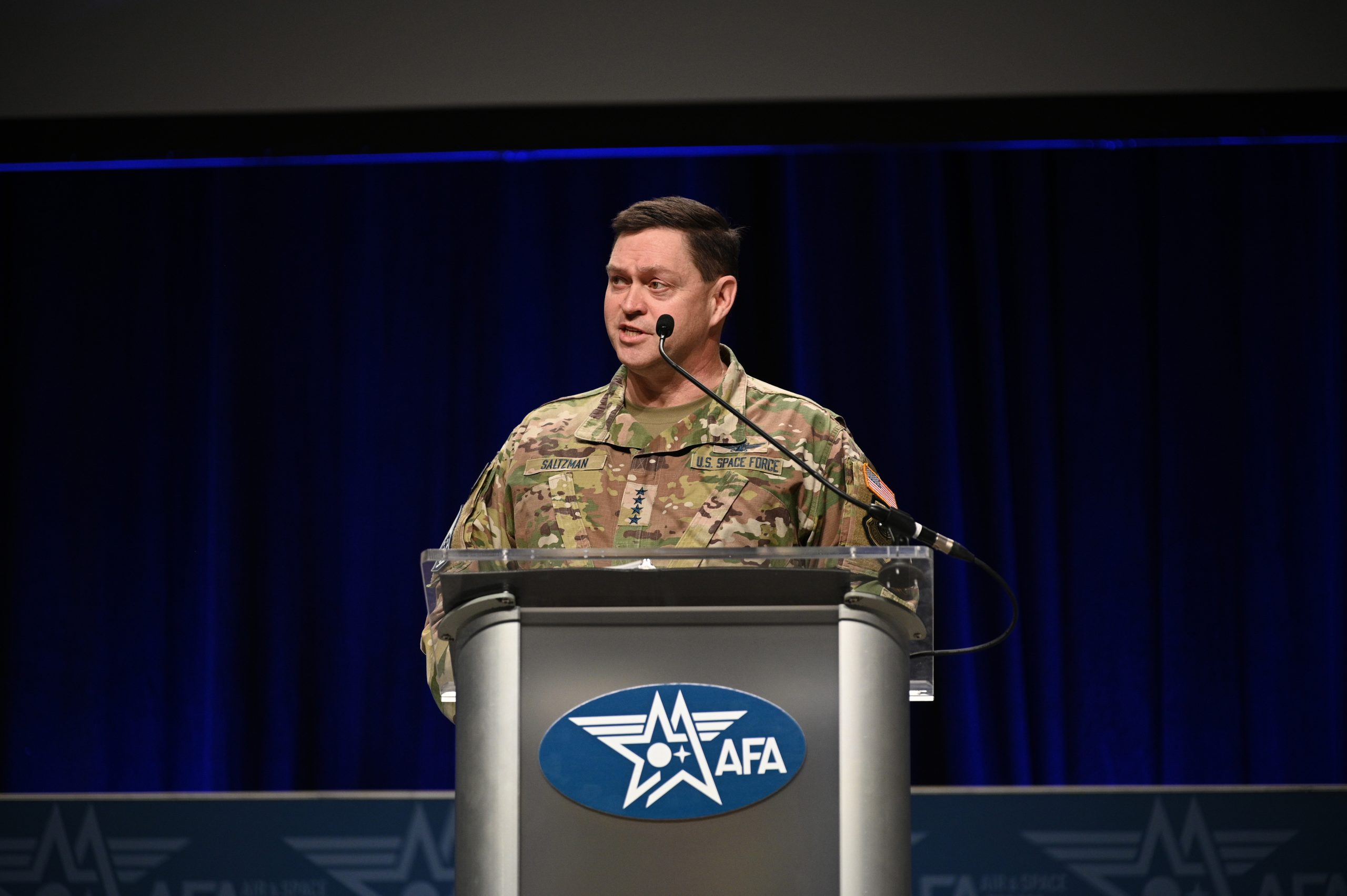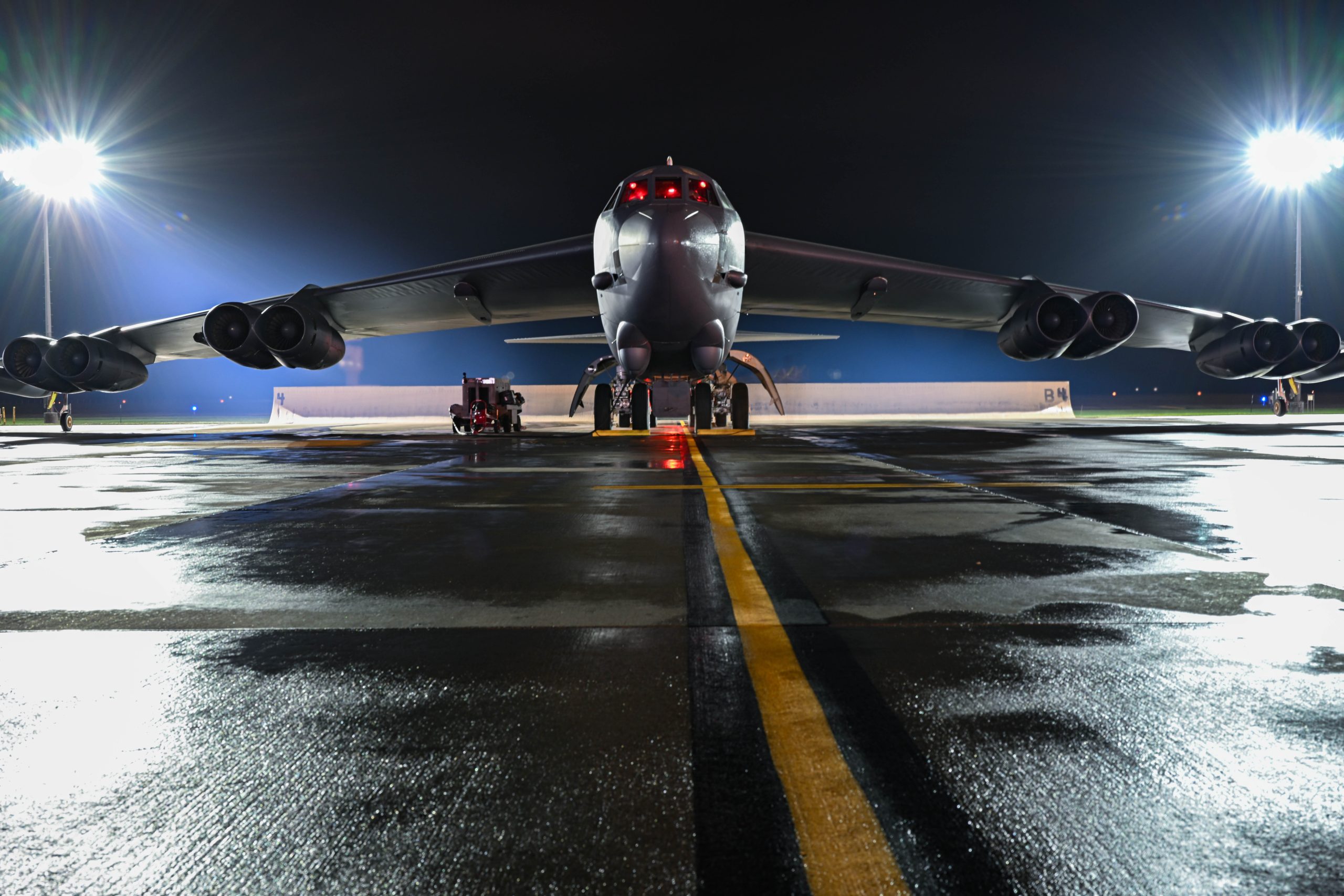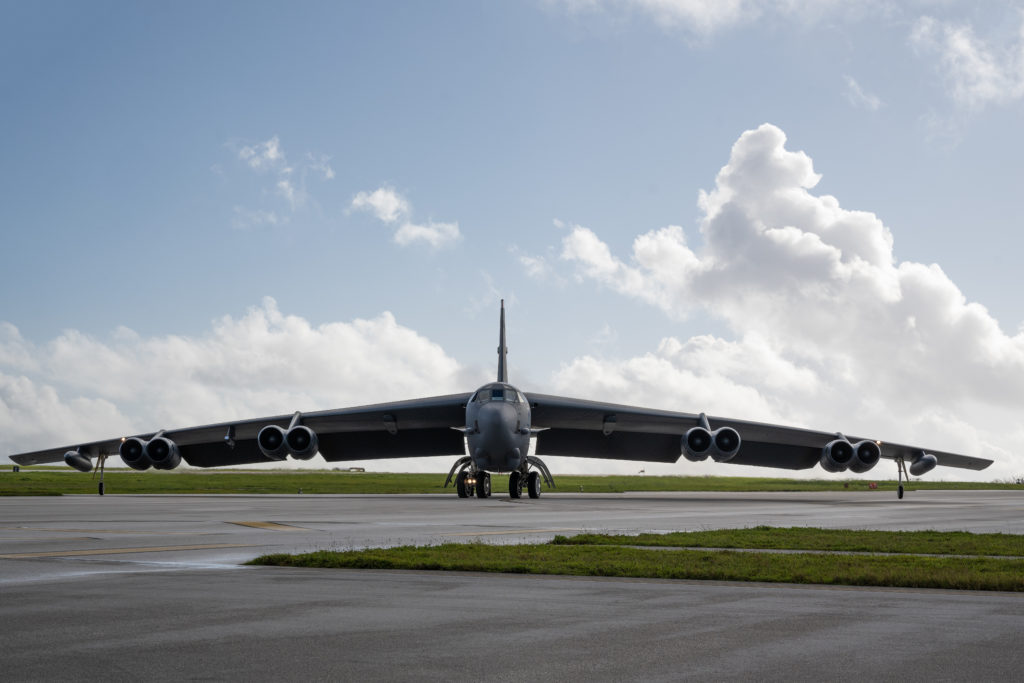Two B-1 Lancers from Ellsworth Air Force Base joined up with Swedish JAS 39 Gripen fighters Feb. 26 and in the Arctic and Baltic Sea regions, training for surface attack, air interdiction, and close air support scenarios, the Air Force said.
Exercise Vanguard Adler took place as Hungary lifted the last roadblock to Sweden’s entry into the NATO alliance the same day. U.S. bombers operated with Swedish fighters and joint terminal attack controllers, according to an Air Force release.
“This timely opportunity for our crews to exercise our collective defense capabilities … in the Arctic region is incredible,” said Lt. Col. Benjamin Jamison, 37th Bomb Squadron director of operations and leader of Bomber Task Force 24-2, in the release. “It demonstrates our ironclad commitment to our partners and allies, demonstrates our expansive reach, and sends a strong deterrent message to potential adversaries.”
The B-1 Lancers flew from Ellsworth Air Force Base, S.D., to Luleå-Kallax Air Base, arriving on Feb. 23. It was just the second time a U.S. bomber has touched down in Sweden, following another B-1 task force out of Dyess Air Force Base, Texas, last year. This is also the first multi-day deployment of U.S. bomber aircraft to Sweden, aimed at “building partnerships and increasing readiness,” as part of the Air Force’s BTF mission.
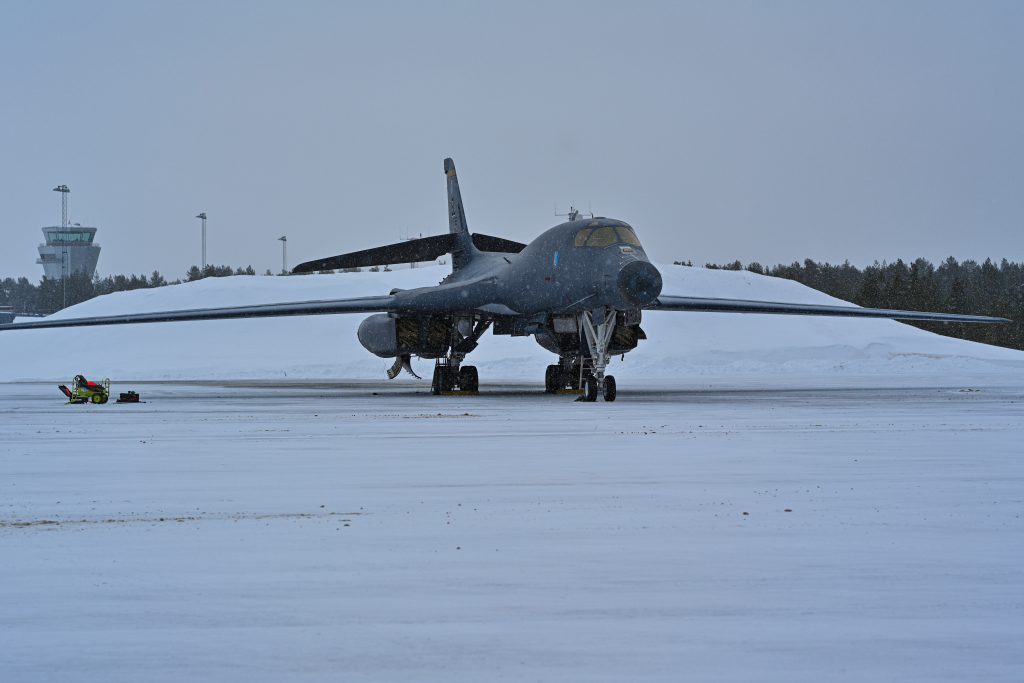
The bilateral training coincidentally took place on the same day as Hungary’s parliament voted to approve Sweden’s NATO membership.
Sweden and its nordic neighbor, Finland, applied to join NATO in May 2022 in the wake of Russia’s invasion of Ukraine three months earlier. Finland joined the alliance in April 2023, but Sweden’s application got hung up as NATO members Turkey and Hungary raised objections. Negotiations with Turkey were completed late last year, leaving Hungary as the final hold out.
U.S. National Security Advisor Jake Sullivan welcomed that decision. “Like Finland, which recently joined our Alliance, Sweden is a strong democracy with a highly capable military that shares our values and vision for the world,” Sullivan said in a statement.
Russia threatened retaliation if Sweden and Finland joined NATO after they applied, but the two formerly neutral countries deemed entry into the alliance as their best bulwark against expanded Russian aggression after the invasion of Ukraine. Russian President Vladimir Putin did not comment publicly on Hungary’s decision, but the Kremlin’s Foreign Ministry has previously threatened “military-technical” and other measures should Sweden become the 32nd member of the alliance. That same “military-technical” term was used in advance of its invasion of Ukraine to characterize its actions there.
“On our part, we will closely monitor what Sweden will be doing in the aggressive military bloc, how it will implement its membership in actuality,” said Russian Foreign Ministry Spokeswoman Maria Zakharova, according to the Kremlin’s state-owned media on Feb. 28. “We will formulate our response policy course and response steps of a military-technical and other nature in order to curb threats to Russia’s national security which emerge as a result.”
Both Sweden and Finland are strategically located in Northern Europe. Joining NATO is a momentous step for Sweden, which has steadfastly avoided alignment over 200 years. But Sweden is not exactly a stranger to its new NATO allies, having regularly engaged in military exercises with NATO members and allies in recent years. Events such as the Arctic Challenge, a large-scale multinational training focused on air operations in the Arctic region, have previously seen U.S. aircraft, including bombers, training and operating with Swedish aircraft.
